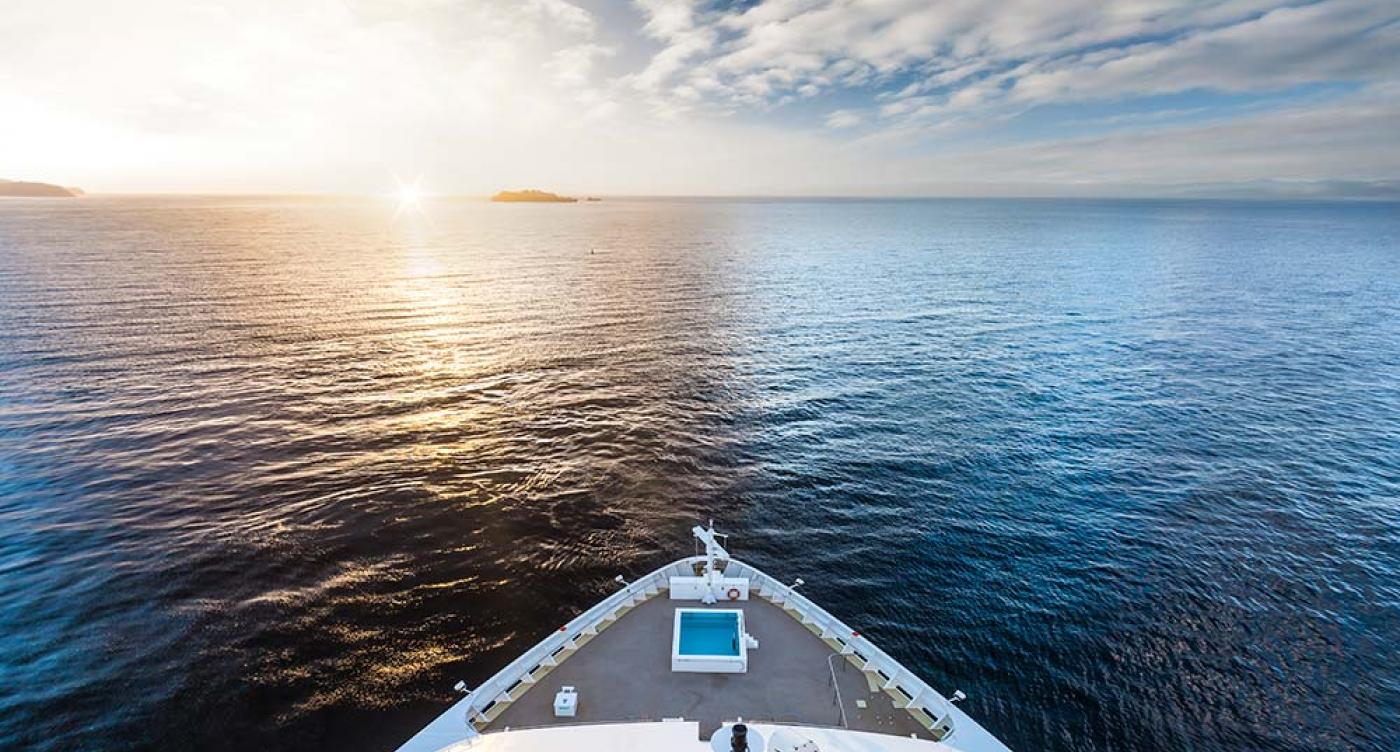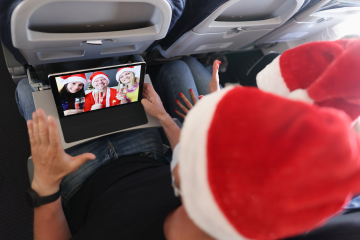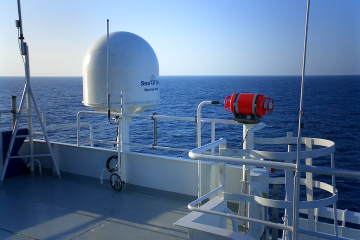Harness the power of onboard cameras for improved Passenger Experience
Onboard cameras have long been a mainstay for any Maritime Operator, used as an essential safety and security tool. However, the potential and possibilities of live streaming from onboard has extended the role that onboard cameras play as a key contributor to the overall passenger entertainment experience.
Use cases such as streaming a live on-board production to passengers’ own devices or creating a dedicated live channel from a starboard-side mounted IP camera have become standard fair for many operators, however, used correctly, the onboard camera also opens the possibility to create a “virtual window” for passengers.
A virtual window in this context is a default channel which combines live streams from the ship deck with information such as ship tracker and latest weather to provide passengers with an interactive and informative experience throughout their journey. This is particularly interesting for cabins below deck without actual windows.
Given virtually all cruise and ferries have onboard cameras installed such as bridge cam, pool cam or the port side cam setting up a virtual window can be an easy way to improve the overall passenger experience. Extending the capability to passengers’ own devices further extends the possibilities.
There is a saying that having a bridge camera channel brings luck to the ship ? So, let’s dig more into how cruise operators can provide a seamless experience for their passengers.
Operators often don’t pay enough attention to the quality of the on-board cameras with the majority displaying low image quality with no dark light adaptation. This significantly limits the possible passenger facing use cases... and means Operators are missing an opportunity for easy passenger engagement.
Some of the most common issues include:
-
Camera resolution is not set to day/night switching function.
-
Camera does not support IP output... installing an encoder can be an easy way to rectify
-
Camera resolution is not HD... analogue Pal or NTSC provides a much lower image quality
-
Simple camera maintenance...simple things such as regularly cleaning the camera’s lens which affects the overall quality. Luckily, new cameras have special coated window cases to protect the lens.
Tips on improving the Bridge Cam quality:
-
Check the quality of the camera’s output and use external HDMI/SDI HD encoder. If the IP output is low quality, the best scenario is to use IP TS Stream camera (multicast).
-
Check the quality of the camera’s module and change these to high quality and turn on the dark mode vision. In low-light conditions, old cameras will automatically shift to black and white night vision. while new cameras display multi color night vision images.
-
Select HD broadcast quality cameras. If the in-cabin TVs support HD it is recommended to check if the output of the camera is also HD.
-
Update digital encoder if necessary and change to Digital modulator if not available.
-
Cameras should be of a recognized marine standard and type approved, to ensure performance and vibration, humidity, temperature and corrosion resistance.
The best webcam available on cruise ships at the moment is HD with 1920×1080 pixels, these cameras can easily complement high quality onboard digital TVs. The high quality and superior colour creates a whole new experience for passengers.
MAXICASTER provides advanced on-board camera support out-of-the-box. Want to learn more about ways to maximise the power of your on-board cameras... drop us a line...




